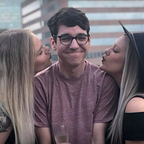Getting Things Done, to Get Things Done
We’re in the final sprint of our spring semester. That means right now we’re working on three big deliverables:
- A functioning prototype
- A website documenting our whole process
- A final presentation we will deliver to our class and our clients
To recap our visioning sprints, we generated many different storyboards focusing on many different design opportunities (which were derived from primary research). We then focused very narrowly on three distinct parts of the Work Authorization Document Life cycle: authoring, execution, and alterations.
Having decided that we wanted a functional prototype as a deliverable, we spent some time discussing which concept would be valuable to explore, and how it would help us moving into the summer term, where we will be on base at Ames.
We focused on a concept that emphasizes both the execution, and the alteration stage. While we used different evaluation techniques to narrow on this, here’s a high level rationale: NASA has a reputation for doing more with less, and empowering technicians can both greatly improve process efficiency and morale when it comes to long term projects.
NASA has a reputation for doing more with less, and empowering technicians can both greatly improve process efficiency and morale when it comes to long term projects.
The Prototype
We’re building around a scenario that looks something like this:
A technician carries a tablet that allows her to scan tags (RFID) that communicates back to a central database. This associates the part with the relevant Work Document.
Information can be sent back to the electronic version of the WAD, including photos, voice recordings, and text annotations or comments.
Our technician will run into a problem performing the work as described in their work order, and will need to contact an engineer for an alteration.
Once the technician in our story asks for an alteration, an engineer will bring up the relevant steps on their end, and have access to contextually relevant info. In our scenario, this is the part that was scanned earlier.
The Site and Presentation
As things wrap up, another consideration is how we’re going to compile and present our research.
We did a little website workshop last week that should help inform presentation content too.
We started with a round robin exploration of team goals for the site. Here were some big common ones that stood out:
- A functioning prototype
- A website documenting our whole process
- A final presentation we will deliver to our class and our clients
We followed this with a card sorting exercise where we took a list of all of our deliverables over the course of the semester, selected 20, and categorized them. We went around a circle explaining how we categorized them. This spawned meaningful conversations about what artifacts really tell our story, and helped us generate a narrative arc that structures our content. This helped us get a sense of which pieces of information we wanted in the site.
This gave us a comprehensive information architecture, which turned into a document where we’re writing up content segment by segment.
We’re building wireframes in parallel, careful to let the content inform this part. We’re definitely building it up based on some inspirational sites we listed out in an internal doc, but no spoilers.
As per presentation, this is also happening in parallel and being informed by our site content. The only other thing we have to say about it, is that we want to slay. Like, a TED Talk.
Its Crunch Time
As you can see, we’re pretty busy around here. We’re in the homestretch, and we’re excited to show you what we came up with, and the process that led to it, in a single compiled site. In the meantime, we have these soundbites going back to January.
But hey, did you see the TESS Launch this week? That was pretty cool, maybe next year the team will do a project on classifying Exoplanets?
We’re Signing off Until Next Week
Team C-137
